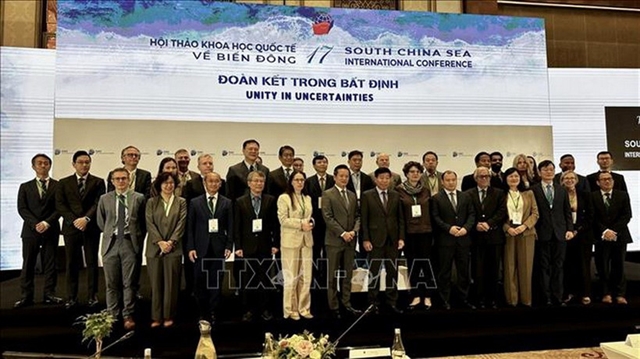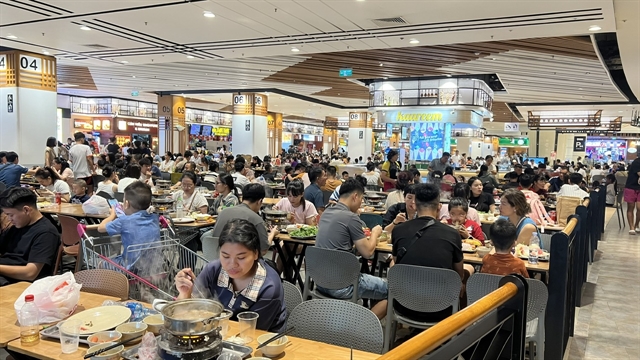 Society
Society
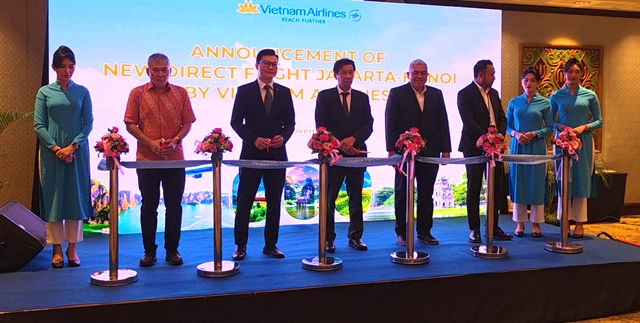
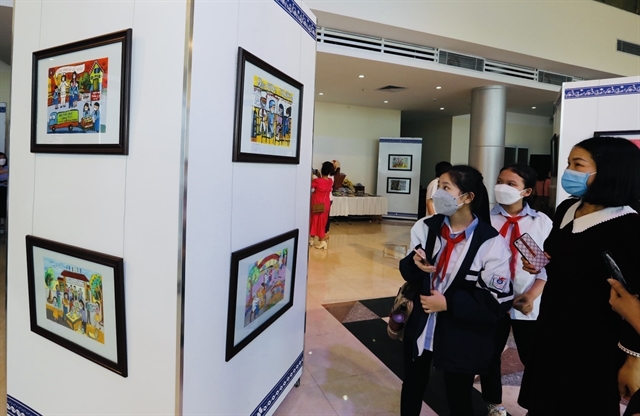 |
| An exhibition with the theme "Đan Phượng’s children join hands to prevent and combat COVID-19 pandemic" was held at the district cultural house. — VNA/VNS Photos |
HÀ NỘI — As one of Hà Nội’s leading districts in building new-style rural areas, local authorities of Đan Phượng District have been creative and made efforts to bring into full play the value of the village’s cultural houses.
The cultural house of La Thạch Village, Phương Đình Commune, is always crowded from early morning till evening, no matter whether it is summer or winter.
The house has sports equipment like walking, cycling, and waist-swinging machines suitable for all ages.
Every evening, villagers practice dancing and do internal nourishing exercises to the melody of music.
The cultural facilities have gained public consensus in fulfilling the province’s socio-economic tasks.
Art and sports clubs have been formed to meet public demand and contribute to nourishing cultural community values.
Along with other cultural institutions, cultural houses play an important role in the spiritual life of local people in Đan Phượng District.
Over the years, the district’s authorities have invested resources and prioritised building cultural institutions from the district to the grassroots level.
Thanks to creativity in the organisational method, especially since building a new-style rural area, the cultural house has transformed into a space to nurture cultural, art and sport love, contributing to the preservation and promotion of the district’s traditional cultural values.
Phan Công Tính, head of the culture and communication department of Đan Phượng District, said the district has 131 cultural houses of villages and residential groups.
The cultural house is where meetings implementing Party resolutions, State policies and laws are held. He said it is also where the community's art, sports and entertainment activities take place.
 |
| An art performance to celebrate National Reunification Day and Labour Day (April 30 - May 1) at the Cultural House of Đan Phượng District on the occasion of the cultural week in May. |
Almost all cultural houses have art, cultural and sports clubs. Each commune holds 40 to 50 art, cultural and sport exchange activities every year, he said, listing some cultural houses with active activities such as cultural houses of Đông Khê, Đoài Khê villages, Tây Sơn Street residential group, Thụy Ứng (Phùng Town), La Thạch Village (Phương Đình Commune).
Bùi Thị Quyên, director of Đan Phượng District’s Centre for Culture, Information and Sports, said over the past time, to enrich the cultural and spiritual life of local people, the district’s authorities have regularly organised several cultural, art and sports activities. Cultural houses of villages, residential clusters and neighbourhood groups play an extremely important role. It is the place where chèo (popular opera), plays, cải lương (reformed opera), as well as music programmes with the participation of famous singers and artists, take place.
The activities of cultural houses help Đan Phượng District’s authorities promote communication and education on political ideologies and local historical and cultural traditions, creating a joyful and exciting community atmosphere, she said.
Many visitors to Đan Phượng District are surprised by the rapid changes in the heroic land. From a countryside with lots of difficulties, Đan Phượng has become a district with the most ‘best’ titles of Hà Nội: the greenest, the cleanest, with improving local lives and wide clean village roads.
According to Nguyễn Thạc Hùng, vice chairman of the district People’s Committee, the district’s annual income per capita in 2022 was VNĐ73 million (US$3,000).
All communes and towns have been standardised with national health criteria.
The proportion of skillfully-trained employees was 78 per cent. Over 92 per cent of households have been granted the “cultured family” title.
100 per cent of communes in the district have received advanced new-style rural area certificates, while 11 out of 15 communes have been recognised as typical new-style rural areas.
The vice chairman said the local authorities look to develop communes into wards and urbanise the area towards a green and civilised district.
Local authorities have ordered communes to strive to achieve the typical new-style rural areas and upgrade communes into wards. This aims to effectively implement the municipal Party Committee’s project on promoting the National Target Programme on building new-style rural areas in association with restructuring the agriculture sector, developing the rural economy, and improving farmers' material and spiritual life in the 2021-25 period.
Local authorities will focus resources on promoting rapid and sustainable economic development; strengthen the State management of land, construction order, and environmental sanitation.
They will also pay attention to and further develop concentrated large-scale production models and apply high technology and clean agriculture. Along with that, they will continue to develop supply chains from production to consumption and improve the efficiency of local cooperatives.
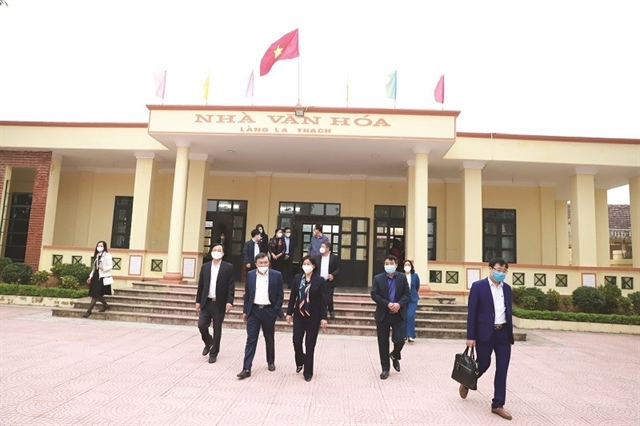 |
| Nguyễn Thị Tuyến, Standing Deputy Secretary of the Hà Nội Party Committee, inspects the activities of La Thạch Village’s Cultural House in Phương Đình Commune, Đan Phượng District. |
Nguyễn Văn Chí, director of the city Rural Development Sub-Department, said over the years, Đan Phượng has always been the leading district in the movement of building new-style rural areas.
A lot of models and movements in the district have created impressive highlights and been welcomed by the public, for example, mural painting, flower streets, installing house number plates, naming streets, green and clean residential groups, promoting the role of cultural houses, he said.
These models and movements of Đan Phượng District have been widely spread to many localities in the city. Others should learn from those models to help the city have more ‘liveable’ new-style rural areas, Chí, deputy chief of Hà Nội’s Coordination Office for the New-Style Rural Development Programme, said.
The article is published under the coordination of the Coordination Office of the New-Style Rural Development Programme in Hà Nội. — VNS

